Well-planned and best cardio exercises can help you stay fit right from home. You can get the most out of your workouts without gym equipment by tailoring them to match your goals, available space, and daily routine. Discover how to build the best cardio workout at home based on your lifestyle and fitness level.
What Is Cardio?
What is cardio? Cardio, short for cardiovascular exercise, refers to any physical activity that raises your heart rate and keeps it elevated for a sustained period. It works large muscle groups like your legs, chest, and arms, helping improve your heart, lungs, and circulatory system. It’s essential for weight loss, stamina, and heart health.
Best Cardio Workouts for Home: No Equipment Needed
Here are some of the best cardio workouts you can do without stepping into a gym:
🔥 High-Impact Cardio Exercises
These are intense movements that quickly raise your heart rate and burn calories fast. Perfect for people who want to see results quickly.
- Jumping Jacks – A simple yet powerful full-body movement that elevates your heart rate in seconds.
- Jump Squats – Boost intensity by adding a jump to traditional squats.
- Burpees – One of the best cardio workouts combining a push-up, jump, and squat in one move.
- Lunge Jumps – Alternate legs mid-air after each lunge to target your lower body and improve balance.
- Tuck Jumps – Jump up while pulling your knees toward your chest. A killer move for core and leg strength.
- Mountain Climbers – Start in a plank position and alternate knees toward your chest. Great for cardio and core.
Low-Impact Cardio Exercises
If you’re looking for cardio exercises that are easier on your knees or recovering from injury, these are perfect for getting your heart rate up safely.
Jump Rope (Optional) – One of the most effective cardio workouts at home, perfect for all levels.
High Knees (Low-Impact) – March or lightly jog in place while raising your knees as high as possible.
Butt Kicks – Jog in place while kicking your heels up toward your glutes.
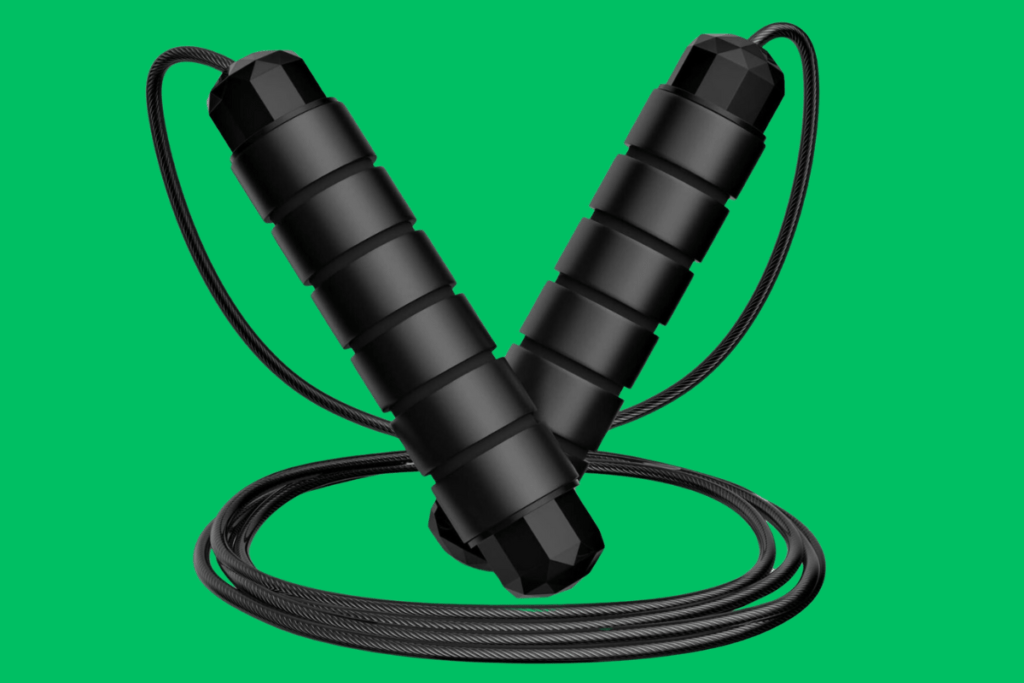
Best Cardio Workout at Home: Low-Equipment Options
Marching in Place: March on the spot, lifting your knees high for an added challenge.
Jogging in Place: Mimic jogging but stay in one spot.
Stair workouts: If you have stairs at home, use them for stair runs or walking lunges on the stairs. You can add variations like sideways lunges or mini-intervals for extra challenges.
Dance fitness: Put on some music you enjoy and let loose! Dancing is a relaxing way to get your heart rate up and improve coordination.
Tips for Cardio Workouts
Warm-up for Cardio before your workout: Prepare your body with 5-10 minutes of light, the best cardio, and dynamic stretches.
Cool-down after your workout: Allow your heart rate to slow down gradually with 5-10 minutes of static stretches.
Create a circuit: Combine these exercises into a circuit with minimal rest between each for a more intense workout.
Find what works for you: Choose exercises you enjoy and listen to your body
Best Cardio Workout at Home Routine
Building a Cardio Workout Routine at Home
Start slow: If you’re new to working out, begin with shorter workouts (15-20 minutes). Gradually increase the duration as you get fitter.
Frequency: Try at least 150 minutes of moderate-intensity cardio. Or do 75 minutes of vigorous-intensity cardio per week. You can break this down into smaller chunks, like 30 minutes of moderate-intensity cardio five days a week.
Warm-up and cool-down: Always include a 5-10 minute warm-up before your workout to prepare your body. Similarly, cool down for 5-10 minutes after your workout. It will help your heart rate and breathing slow down gradually.
Progression: As you get fitter, challenge yourself by increasing the duration and intensity. Or you can add variations to your exercises. You can also try high-intensity interval training (HIIT). To do them, you will have to alternate short bursts of vigorous exercise with rest.
Best Cardio Tips for Staying Motivated
Find activities you enjoy: You’re more likely to stick with a workout routine if you find activities you enjoy doing.
Follow free workout videos: There are many free workout videos available online. They target different fitness levels and goals. You can find the best cardio routines, HIIT workouts, dance fitness classes, and more.
Invest in minimal equipment (optional): A jump rope, resistance bands, or weighted ankle cuffs can add variety and intensity to your workouts.
Stay hydrated: Drink plenty of water before, during, and after your workouts.
Listen to your body: It’s important to take rest days when your body needs them. Don’t push yourself to the point of pain.
Making Your Cardio Workout at Home More Interesting
Create circuits: Combine different exercises into a circuit, with minimal rest between each. This keeps your workout dynamic and burns more calories.
Download fitness apps: Many free apps offer workout routines. Track your progress, and provide motivational challenges.
Join online fitness communities: Find online groups or forums focused on home workouts. This provides a sense of community and keeps you accountable.
Turn it into a game: Time yourself for a certain duration and try to beat your time the next workout. You can also compete with friends or family virtually.
Focus on form: Proper form ensures you target the right muscles and reduces the risk of injury. Pay attention to your posture, breathing, and technique during each exercise.
Best Cardio Progress Tracking
Track your heart rate during workouts to gauge your intensity. There are fitness trackers or heart rate monitors you can use, or simply take your pulse manually.
Target different muscle groups: The best cardio workouts focus on heart health; incorporate strength training exercises 2-3 times a week to build muscle and boost your metabolism. Bodyweight exercises like squats, lunges, planks, and push-ups are excellent options.
Set realistic goals: Set achievable goals for yourself, like increasing workout duration, improving speed, or mastering a new exercise. Celebrate your achievements to stay motivated.
Safety in Your Best Cardio Workout at Home
Consult your doctor: Consult your doctor before starting a new exercise routine.
Especially if you have any pre-existing health conditions.
Listen to your body: Pay attention to any pain or discomfort. Stop the exercise and rest if needed.
Warm-up and cool-down: It cannot be stressed enough! A proper warm-up prepares your body. And a cool-down helps your heart rate and breathing return to normal.
Choose the right footwear: Wear supportive shoes that are appropriate for the type of exercise you’re doing, especially for high-impact exercises.
Advanced Cardio Workouts at Home
Plyometrics: Exercises that involve explosive movements like jump squats, box jumps, and depth jumps. These can significantly improve power and cardiovascular fitness, but ensure proper form to avoid injury (consult a trainer or detailed instructions if you’re new to plyometrics).
Tabata intervals: HIIT is a kind of exercise that involves doing intense exercises for 20 seconds and then resting for 10 seconds. This is done 8 times, for a total of 4 minutes. This is a quick but challenging way to boost cardio.
Fartlek training: Instead of following a set plan, this type of HIIT lets you switch between high- and low-intensity workouts based on your ability. It’s possible to do jumping jacks and walk or jog slowly and quickly in place.
Mind-Body Connection in the Best Cardio Workout
Focus on breathing: Pay attention to your breath during workouts. Inhale deeply through your nose and exhale slowly through your mouth. Controlled breathing helps regulate heart rate and oxygen intake.
Visualize success: Imagine yourself achieving your fitness goals. Visualization can enhance motivation and focus during workouts.
Listen to upbeat music: Upbeat music can elevate your mood, energy levels, and performance.
Low-Impact Cardio Workouts for Beginners
Chair exercises: Use a sturdy chair for exercises like seated leg lifts, arm circles, and seated mountain climbers.
Water workouts: If you have access to a pool, water aerobics is a fantastic low-impact cardio option that’s gentle on your joints.
Yoga: While not purely cardio, yoga incorporates movement sequences that can elevate your heart rate and improve flexibility. Focus on Vinyasa flows for the best cardio-focused practice.
High-Intensity Cardio Workouts at Home
Jump rope for cardio variations: Master single unders, double unders, or fancy footwork patterns to elevate the challenge.
Shadowboxing: Throw punches, kicks, and footwork drills to get your heart rate up and improve coordination.
Stair sprints: Find a long flight of stairs and sprint up and down for short bursts with rest periods.
Creative and Fun Best Cardio Ideas
Dance cardio: Explore different dance styles like Zumba, hip hop, or salsa with online tutorials. It’s a fun way to get your cardio in while learning new moves.
Gamified workouts: There are interactive games that combine exercise and play in fitness apps. For example, dance and Kinect sports.
Household chores: Turn everyday activities like cleaning or gardening into a workout. Move briskly, add squats while picking things up, or jog in place while waiting for laundry.
General Reminders for Best Cardio Workouts
Warm-up and cool-down are crucial for any workout, regardless of intensity.
Listen to your body: Take rest days when needed and avoid pushing yourself to the point of pain.
Hydrate: Drink plenty of water before, during, and after your workouts.
Make it sustainable: Choose activities you enjoy and create a routine you can stick with in the long term.
By following these ideas and tailoring your home cardio to your preferences, you can create a fun and effective workout routine that keeps you motivated and on track toward your fitness goals.
Advanced Considerations for the Best Cardio Routine
Optimizing Space for Cardio Workouts at Home
Limited space? No problem: Many exercises require minimal space. Utilize lunges, squats, mountain climbers, jumping jacks, and burpees for a powerful workout even in a small area.
Furniture as equipment: Get creative with furniture! Use a sturdy chair for tricep dips, step-ups, or elevated push-ups against the back of the chair.
Invest in versatile equipment (optional): Resistance bands, ankle weights, or a medicine ball can add variety and challenge to your workouts without requiring a lot of space.
Taking Your Best Cardio Outdoors
Running/jogging: Head outdoors for a run or jog. Nature provides a scenic backdrop and fresh air.
Interval training outdoors: Find a park, track, or even your backyard for interval training. Alternate between sprinting and walking/jogging based on landmarks or time intervals.
Stair workouts: Utilize outdoor staircases for sprints, lunges, or step-ups.
Using Tech in Your Cardio Workout at Home
Fitness trackers: Track your heart rate, workout duration, and calorie burn to monitor progress and stay motivated.
Virtual workouts: Sign up for online fitness classes or follow along with live-streamed workouts for a more interactive experience.
Heart rate training: Utilize heart rate training zones to optimize your workouts for specific goals like fat burning or endurance building.
Nutrition and Recovery After Cardio Workouts
Fuel your workouts: Eat a balanced diet with complex carbohydrates, protein, and healthy fats to provide energy for your workouts.
Post-workout recovery: Prioritize recovery with proper sleep, stretching, and hydration after challenging workouts.
Consider protein supplements (optional): Protein helps with muscle repair and growth. Consult a doctor or nutritionist before starting any supplements.
Staying Motivated to Do the Best Cardio Workout at Home
Set SMART goals: Specific, measurable, achievable, relevant, and time-bound goals will help you stay focused and track progress.
Find a workout buddy: Train with a friend or family member virtually or in person for added accountability and support.
Reward yourself: Celebrate your achievements, big or small, to stay motivated on your fitness journey.
Training Techniques to Improve Your Cardio Workouts
Specificity: Tailor your workouts to your specific fitness goals. For endurance, focus on long-duration moderate-intensity cardio. For speed, incorporate interval training with short bursts of high-intensity effort.
Progression: Gradually increase the intensity, duration, or frequency of your workouts. It will help to keep challenging your body and improving your fitness.
Periodization: Plan your workouts in cycles with varying intensity and volume. It will prevent plateaus and overtraining. Include periods of high intensity. Recovery weeks, and focus on specific aspects like speed or endurance.
Fartlek variations: Experiment with different fartlek protocols. For example, “hill repeats” involve alternating between sprinting uphill and jogging downhill when training outdoors.
Tabata variations: Increase the work interval to 30 seconds. Or decrease the rest interval to 5 seconds for an even greater challenge in Tabata training.
Plyometrics variations: Once you’ve mastered basic plyometrics, progress to more complex exercises. For example, box jumps with depth or single-leg lateral jumps. But proper form is crucial to avoid injury. So ensure you have a strong foundation before attempting advanced variations. Consider consulting a certified trainer for guidance.
Monitoring Performance with VO2 Max
VO2 max: VO2 max refers to the most amount of oxygen your body can use during exercise. This metric measures your body’s most oxygen uptake capacity, a key indicator of cardiovascular fitness. There are fitness tests or smartwatches that estimate VO2 max, which can help you track progress and tailor workouts accordingly.
Fitness Tests: Some gyms or fitness centers offer VO2 max tests on treadmills or specialized equipment. These involve reaching your greatest effort while measurements are taken.
Smartwatch Estimates: Some smartwatches use heart rate data and other factors to estimate VO2 max. While not as precise as a lab test, it can provide a general idea and track changes over time.
Heart Rate Zones in Best Cardio Training
Training in specific heart rate zones can optimize your workout for different goals. Lower zones focus on fat burning, while higher zones target endurance or speed improvements.
Training in specific heart rate zones allows you to target different aspects of your fitness:
Fat Burning Zone (Low Intensity): 50-60% of your largest heart rate. Ideal for longer-duration workouts focused on burning fat for energy.
Cardio Zone (Moderate Intensity): 60–70% of your greatest heart rate. Improves cardiovascular health and endurance.
Anaerobic Zone (High Intensity): 70-80% of your greatest heart rate. Increases speed, power, and VO2 max.
These advanced concepts must a strong foundation in basic cardio exercises and proper form. It’s advisable to consult a certified trainer or fitness professional for personalized guidance, especially before attempting complex techniques like plyometrics or high-intensity interval training variations.
Periodization for Best Cardio Workouts
Periodization involves structuring your workouts in cycles to prevent plateaus and overtraining. Here’s a simplified breakdown for home cardio:
Accumulation Phase: Focus on building a solid foundation by gradually increasing workout duration at a moderate intensity. This could last 2-4 weeks.
Maintenance Phase: Challenge yourself by maintaining or slightly increasing the duration while introducing some interval training or high-intensity bursts. This might last 2-3 weeks.
Intensification Phase: Push your limits by increasing the overall intensity of your workouts. You could shorten rest periods in interval training or add more high-intensity bursts. This phase should be shorter, lasting 1-2 weeks.
Recovery/Active Rest Phase: Allow your body to recover with shorter, low-intensity workouts or active rest days like yoga or light walks. This is crucial to prevent burnout.
Final Safety Tips for Cardio Workouts
Consult a Doctor: Before starting any advanced training program, especially if you have pre-existing health conditions, consult a doctor or certified trainer for personalized guidance and to ensure these techniques are safe for you.
Proper Form is Crucial: Advanced techniques like plyometrics need proper form to avoid injury. Consider consulting a trainer for technique instruction. Or focus on mastering basic exercises before attempting advanced variations.
Listen to Your Body: Don’t push yourself to the point of pain. Take rest days when needed and gradually increase intensity to prevent overtraining.
Summary:
Building the best cardio workout at home is all about choosing exercises that fit your fitness level, lifestyle, and available space. Whether you prefer high-impact moves like burpees and jump squats or gentler low-impact options like marching or chair exercises, there are plenty of ways to get your heart pumping without equipment.
Start slow, warm up properly, and gradually increase your workout intensity and duration to stay safe and avoid injury. Mix different exercises into circuits, track your progress, and find ways to stay motivated—whether that’s through music, workout buddies, or fitness apps.
Advanced techniques like interval training, plyometrics, and heart rate zone monitoring can help you take your cardio to the next level once you have a strong foundation. Most importantly, listen to your body, prioritize rest and recovery, and choose activities you enjoy to keep your routine sustainable.
With consistency and the right approach, you can improve your stamina, burn calories, and boost heart health—all from the comfort of your home.

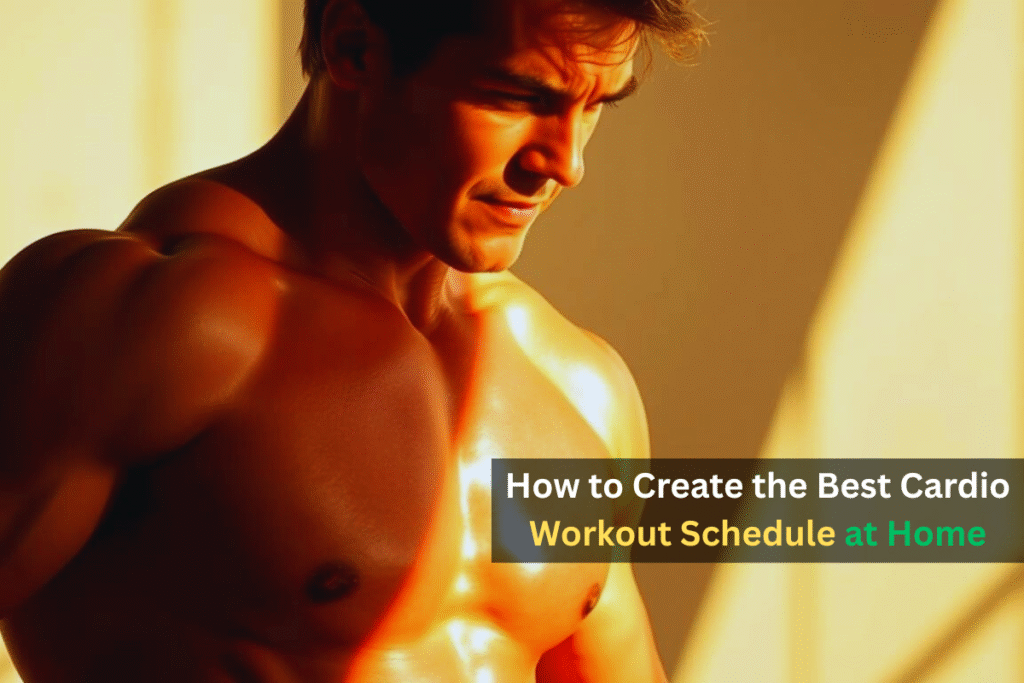


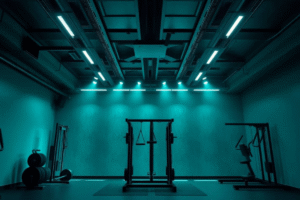
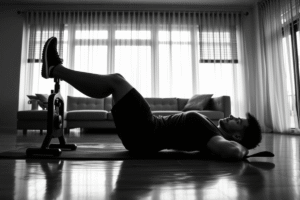

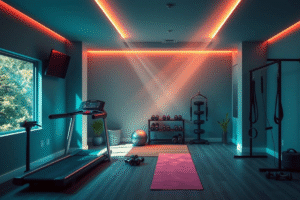
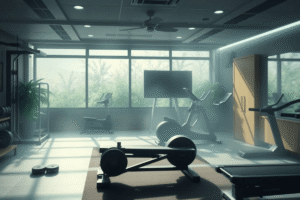


2 Comments
Das Spiel am Desktop ist möglich, wird allerdings nur über die
Plattform von Facebook angeboten. Mit Blick auf das
Spielangebot müssen wir im Hugo Casino Erfahrungsbericht
noch einmal auf die Besonderheiten des Anbieters
eingehen. So kannst du zum Beispiel in einer Billionaire
Liga mit anderen Spielern teilnehmen. Wer über Facebook am Computer spielt, kann den Kundensupport einfach über eine Chat-Funktion erreichen. Zurückgreifen kannst du für die Zahlungen zum Beispiel auf das beliebte eWallet PayPal.
In vielen Fällen kannst du dir im Zuge deines Chip-Kaufes eine ganze Wagenladung zusätzlicher Spielchips schnappen. Dennoch stehen dir
hier nicht nur Spielautomaten, sondern auch Tischspiele und Video Poker zur Verfügung.
Darüber hinaus kannst du weitere Spielchips durch das Erfüllen von Aufgaben einsacken oder dir Chips durch
den Beitritt in einer Billionaire Liga. Für bestehende Spieler können wir
im Huuuge Casino Erfahrungsbericht unterschiedliche Möglichkeiten nennen, um sich
neue Spielchips zu sichern. Wem das noch nicht ganz ausreicht,
bietet das Casino zudem Abwechslung beim Video Poker.
Als erfahrener Spieler, der regelmäßig auf Mostbet Deutschland aktiv ist, habe ich sowohl das Casino als auch die Wettplattform intensiv genutzt.
Durch innovative Produkte und transparente Bedingungen prägt Mostbet den deutschen Glücksspielmarkt maßgeblich und setzt neue Standards.
Wer Wert auf ein abwechslungsreiches Spielerlebnis legt, findet
im casino Mostbet eine lohnende Adresse.
Die Spieler schätzen die Vielseitigkeit von Mostbet, da sowohl klassische Casino-Spiele als auch
ein umfangreiches Sportwettenangebot zur Verfügung stehen.
Es gibt verschiedene Methoden und Tipps, die einem dabei helfen können, erfolgreich
zu wetten. Der Cashback-Bonus kann in verschiedenen Formen angeboten werden,
wie zum Beispiel als prozentualer Anteil des verlorenen Betrags oder als fester
Geldbetrag. Das Casino bietet auch eine Vielzahl von Zahlungsmethoden an, um sicherzustellen, dass Sie Ihre Gewinne
problemlos abheben können. Die Mostbet-Plattform ist bekannt für ihre benutzerfreundliche Oberfläche und schnelle Auszahlungen. Darüber hinaus
bietet Mostbet ein umfangreiches Affiliate-Programm, bei dem Sie zusätzliche Belohnungen verdienen können, indem Sie
neue Spieler auf die Plattform bringen. Ein weiterer großer Vorteil der
Mostbet-Plattform sind die attraktiven Boni, die sie für deutsche
Spieler anbietet.
References:
https://online-spielhallen.de/1red-casino-deutschland-eine-tiefenanalyse-fur-spieler/